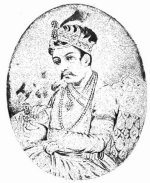
Worksheets and No Prep Teaching Resources
Reading Comprehension Worksheets
World Religion

World Religion
 Worksheets and No Prep Teaching Resources Reading Comprehension Worksheets World Religion |
 World Religion |
| edHelper's suggested reading level: | grades 9 to 12 | |
| Flesch-Kincaid grade level: | 8.75 |
|
Religious Tolerance and Fanaticism
By Colleen Messina |

|
 1 Religion evokes strong reactions in people. In the name of religion, people have invaded countries and fought wars. History has many intense examples of religious persecution, but also some striking examples of tolerance. Surprisingly, a Mogul emperor from the 16th century was one of the most tolerant men of all time.
1 Religion evokes strong reactions in people. In the name of religion, people have invaded countries and fought wars. History has many intense examples of religious persecution, but also some striking examples of tolerance. Surprisingly, a Mogul emperor from the 16th century was one of the most tolerant men of all time. |
Create Weekly Reading Books
Prepare for an entire week at once! |
| Leave your feedback on Religious Tolerance and Fanaticism (use this link if you found an error in the story) |
 |
World Religion
|
 |
High School Reading Comprehensions and High School Reading Lessons
|
 |
Social Studies
|